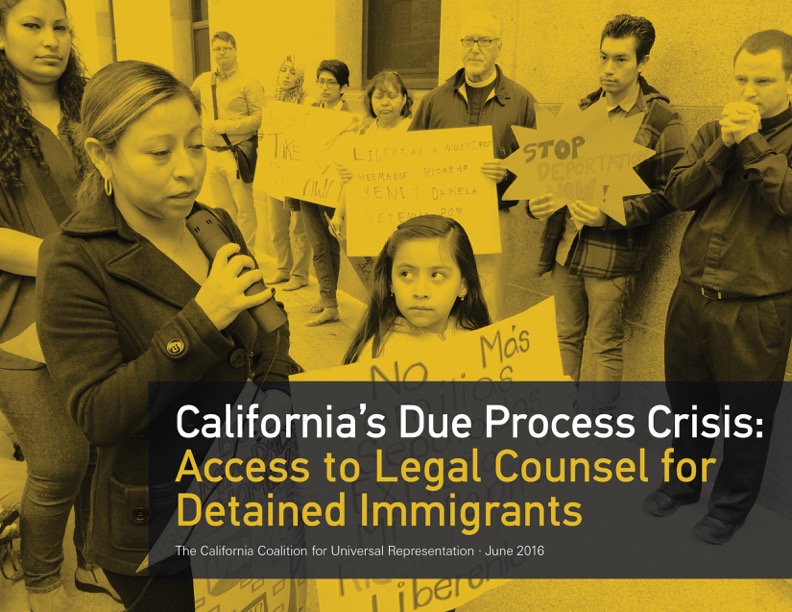Representation matters – and there is a severe representation crisis in California.
Last year, more than 7,000 immigrants in California who were detained by the federal government while they fought their deportation cases did so without a lawyer. That represents nearly 70% of immigrant detainees in our state, who must navigate one of the most complex legal systems without any help.
A report by the California Coalition for Universal Representation, of which the ACLU of California is a member, confirmed what we have long known: representation matters. The report found that detained immigrants in California who were lucky enough to have an attorney won their cases five times as often as their unrepresented counterparts.
Unlike criminal cases, there is no general right to counsel in civil immigration proceedings for people fighting for their right to remain in the United States. But the stakes for these immigrants are high.
Many face persecution and certain death if they are sent back to their home countries. Families are torn apart. Yet, the federal government, which is represented in every case by a trained prosecutor, forces these immigrants to represent themselves in a legal system—and often in a language—that is unknown to them.
California must step in and act where the federal government has failed our immigrant communities. When Californians are detained and deported, California families go hungry and turn to the State for help, children end up in the foster care system, and employers bear the cost of employee turnover. California is bearing the human and economic costs of an unfair federal immigration system.
Take, for example, the case of Adrian.* When I first met Adrian at the Adelanto Detention Facility in San Bernardino, where he was held facing deportation proceedings after a criminal conviction, he had been detained nearly four years fighting his case. He was married to a U.S. citizen, and together they had a U.S. citizen child, then 6 years old. But, while Adrian was in detention, the State had found that his wife, who is disabled, was no longer able to care for their growing son. Without Adrian there to care for him, the boy ended up in the foster care system.
Adrian was just about to lose custody of his son forever when a lawyer stepped and helped Adrian successfully argue for bond, reunite his family, and begin a process to adjust his status based on his marriage to a U.S. citizen. For Adrian, a lawyer meant the difference between losing his family and almost certain deportation, to being able to hug his son after four years and fight for his right to remain in the U.S.
This is why the California Coalition for Universal Representation is urging California and its local governments to follow the example set by New York City, which guarantees representation to all detained immigrants with cases in the City who cannot afford to hire a lawyer. Given the costs that California’s state and local governments already bear when a community member is detained and deported, a universal representation system would more than pay for itself. That is consistent with what recent reviews of the New York City system has found.
The federal immigration system stacks the deck against unrepresented Californians, forcing them into detention and providing them no legal representation in their immigration cases. For far too long,
California families and communities have suffered under this unfair system. California can and must do better to protect its immigrant communities.
Take action: Urge the L.A. County Board of Supervisors to fund a pilot program providing counsel to our detained community members.
*Name has been changed to protect his identity.
The California Coalition for Universal Representation includes: the American Civil Liberties Union of California, the Central American Resource Center, the California Immigrant Policy Center, the California Immigrant Youth Justice Alliance, the Center for Gender and Refugee Studies, the Center for Popular Democracy, Centro Legal de la Raza, Clergy and Laity United for Economic Justice, the Coalition for Humane Immigrant Rights of Los Angeles, Community Legal Services in East Palo Alto, the Immigrant Defenders Law Center, the Immigrant Legal Resource Center, the Immigrant Youth Coalition, the Lawyers Committee for Civil Rights, the National Day Laborer Organizing Network, the National Immigration Law Center, Pangea Legal Services, Public Counsel, the Stanford Law School Immigrants’ Rights Clinic, and the Vera Institute of Justice.
Carmen Iguina is staff attorney at the ACLU of Southern California.
Date
Wednesday, June 8, 2016 - 10:00amFeatured image
